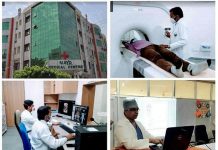Summary
Learning Management Systems (LMS) are commonly used in institutions of education around the world. The aim of this poster is to evaluate the assessment characteristics of these programs, interacting with two types of sources: peer-reviewed articles and Web documents. Our results show that the current focus is on technology evaluation, which indicates the need for an educational outcome-focused theory / pedagogy-driven assessment.
Introducing
The Training Management Systems are a dynamic software community designed to support training in network environments. Already various health education programs were using or planning to incorporate these schemes. It requires careful preparation and assessment to make certain technologies educationally successful. In addition to educational support for learning, the assessment of LMS includes the incorporation of various perspectives such as cost/effectiveness, technological characteristics of the product, commercial properties. The purpose of this article is to examine the features of published LMS, organizing them to suggest future research needs.
Method
Two sources of information have been used in this study: traditional newspapers and web pages. Due to its popularity in the medical community and its traditional roles as the primary source of information on this subject, research journals were chosen. Based on their popularity and usability, web pages were chosen as the source.
Two repositories were searched to locate the research articles: PubMed and Eric. This repository provided a full index of research literature, not only in medical education but also in other fields of social and education. In each database, five keywords were used for the search: “Learning Management System,” “LMS,” “Courseware,” “WebCT,” “Blackboard.” In addition, “knowledge” and “evaluation” were added as a secondary strategy to filter within the search. Because of their success, the two brand names used in this hunt were picked. The articles retrieved were selected if their content was related to assessing any aspect of LMS. The web search was carried out in the same manner. The data collection consisted of defining and tabulating the specified salient features in each document. New tables have been developed that place the variables in the following groups: Communications, Education, Management, File Management, Web Creation, Educational Support, Others.
Effects
Thirty-four journal references were found, 15 of which were not relevant to the subject of our study and were removed from this review. At the time of the research, there were no further 10 references available in our library system. Web search enabled us to recognize 20 links to our topic-related web. Due to redundancy (same content in different URLs), or lack of consistent access, seven sites were eliminated.
Four were systematic assessments of the implementation of technology technologies from the nine Journal References; three were qualitative accounts of the local experiences, five were recommendations for choosing software or software comparisons. In our research, ten web pages were comparisons and three were recommendations for choosing LMS.
Evaluations of Communication Features, Education, Management, and File Management categories were most commonly present in both publication classes (> 20 percent of the references), while File Management functions were defined in much more detail in Web-based references (42 percent of the websites).
Analysis
The exploratory study shows that the LMS evaluation is most often focused on organizing the technical features of these systems. There was an insufficient evaluation by students of the on-field use of LMS. It is important to determine the learning outcomes based on the use of these methods, and in this study, there was no assessment of the cost-effectiveness of these programs.
Future research initiatives in the field of health education will enhance our understanding of the importance of these innovations at various levels. More significantly, in order to improve learning, we need to consider how pedagogy, awareness, and technology can be combined. We need to be aware that improved learning is not the same as technological upgrades. To date, technology is a tool for industrialized education; the challenge for the Information Era is to develop new paradigms.











